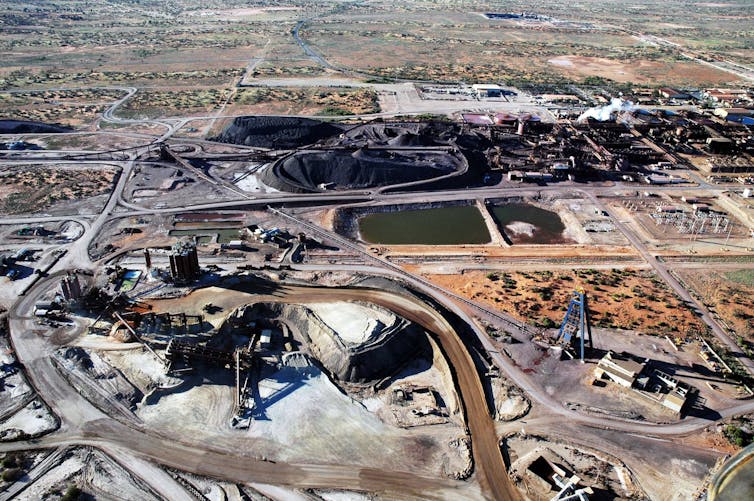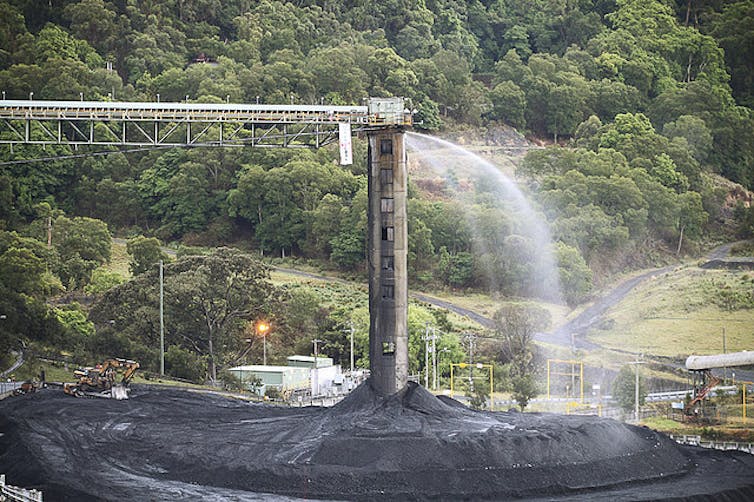Last week, the Federal Government’s National Water Commission (NWC) delivered its third biannual assessment of the national water initiative (NWI). And for the first time, the NWC is looking seriously at water use in coal seam gas (CSG) mining.
The NWI is the Commonwealth Government’s blueprint for water reform in Australia. It brings together state and Commonwealth governments to coordinate policies and actions affecting water use in this country.
The aim is a more cohesive national approach to the way Australia manages, measures, plans for, prices and trades water.
The assessment looks at whether the NWI has improved the management of Australia’s water.
It sounds fairly boring and rather irrelevant if you are not a farmer or living on the Murray-Darling River. But it isn’t.
This is an important assessment of a crucial and highly emotive issue that is currently debated in schools, businesses, government and farmhouses: CSG extraction and its effect on water resources in Australia.
Taking a closer look at mining and water
The NWI has long recognised that the mining and petroleum sector has special water requirements. In fact, Clause 34 of the NWI notes that specific mining and petroleum proposals need to be assessed according to environmental, social and economic considerations. But further management arrangements for water use in these sectors fall outside this agreement.
Mining definitely has special water requirements. The giant Olympic Dam uranium mine in South Australia uses 12,000 megalitres of water per year (one megalitre is equal to 1 million litres). This one mine operator takes 12 billion litres of water from the Great Artesian Basin every year.
In the past few years, there have been many other mining and petroleum activities that have similarly competed for the use of water resources. The most thirsty of all is the extraction of CSG.

The extraction of CSG in eastern Australia, particularly in NSW and Queensland, has created a yawning gulf between farmers, mining companies and governments, as farmers attest to the effects of CSG extraction on water resources.
There have been many exposes on the alleged affect of CSG on water: burning water bores due to CSG intrusion into water reserves, contaminated water sources and increasingly salty water in some areas.
These alleged affects have occurred in prime agricultural land and farmers contend that agricultural production in Australia is threatened.
CSG companies argue there is no cause for alarm.
How is water used in CSG mining?
The fracking of one CSG well can require as much as 5 million litres of water, although often only 2-3 million litres of water is used. In this process, a high-pressure mix of water, sand and chemicals is injected into the reservoir to release gas.
The number of CSG wells will probably peak at 40,000 in the next 10 years – that’s an awful lot of water use.
If we are going to use 2-3 million litres of water down 40,000 wells, then the same amount of water will return to the surface. When the water comes to the surface after fracking, it will in all probability have an increased salt content (brine water) and contain chemicals that were used in the fracking process.
This returned water, known as “produced water”, requires some form of treatment or storage. It cannot be released back into the water cycle unless treated. If it is released untreated, it can cause major contamination of surface and ground water resources.
Is there a plan for all this water?
Until now the NWI has focused on the balance between agricultural water use and the water needs of the environment. For the first time, the assessment has considered the use of water by mining and petroleum industries.

The NWI has recognised that access to, and use of, water by the burgeoning CSG sector has a number of unique features that need to be considered.
The assessment notes that CSG activities have an impact on ground water and surface water resources through both the fracking process and dewatering. There can be a substantial impact on the water system as a whole.
Perhaps most importantly, the NWI assessment recognises there are significant uncertainties about the impact on ground and surface water resources. This can create risk for third parties such as farmers.
It says mining has not yet been properly integrated into water planning and management frameworks.
Indeed, it says “produced water” is a risk to the sustainable management of water resources in those areas. This is because of the volumes of water involved and the uncertain impacts of such water use.
States heading in the right direction, but must march in step
The message for the NWI assessment, regarding water use and CSG extraction is clear. The affected states have changed water management regimes for mining activities. But the regulatory framework for mining and petroleum activities is not particularly well aligned with state water management frameworks. This can lead to suboptimal regulation.
As a result, they call on all states and territories to review their mining and petroleum regulatory frameworks to ensure that water resource use and impacts are addressed.
Managing water from mining must be integrated into a regime that is consistent with the National Water Initiative.
As the CSG industry emerges, and significant amounts of water are consumed, this use of water needs to be covered in an integrated matter rather than through a separate management framework.

